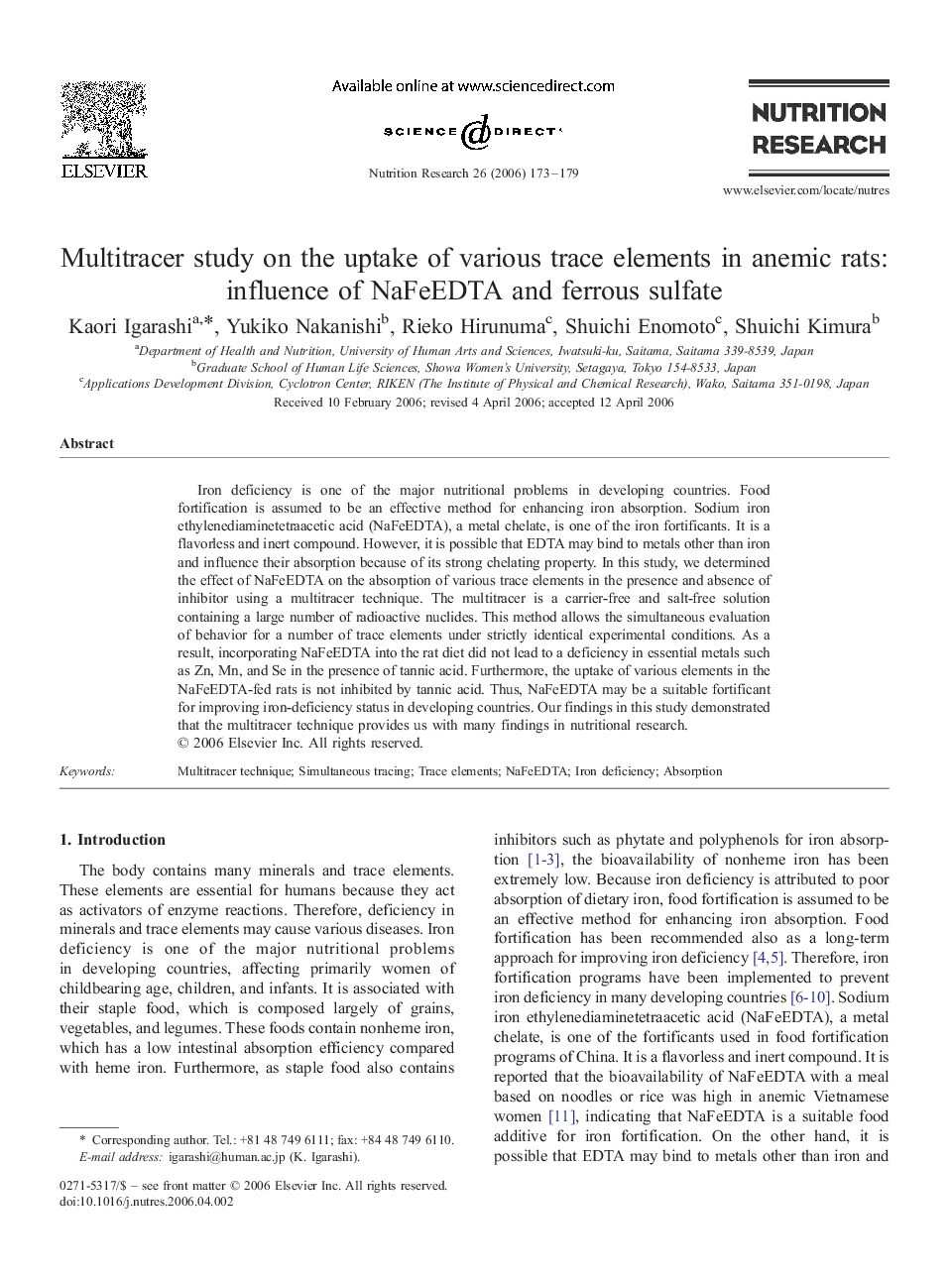| Article ID | Journal | Published Year | Pages | File Type |
|---|---|---|---|---|
| 2809820 | Nutrition Research | 2006 | 7 Pages |
Abstract
Iron deficiency is one of the major nutritional problems in developing countries. Food fortification is assumed to be an effective method for enhancing iron absorption. Sodium iron ethylenediaminetetraacetic acid (NaFeEDTA), a metal chelate, is one of the iron fortificants. It is a flavorless and inert compound. However, it is possible that EDTA may bind to metals other than iron and influence their absorption because of its strong chelating property. In this study, we determined the effect of NaFeEDTA on the absorption of various trace elements in the presence and absence of inhibitor using a multitracer technique. The multitracer is a carrier-free and salt-free solution containing a large number of radioactive nuclides. This method allows the simultaneous evaluation of behavior for a number of trace elements under strictly identical experimental conditions. As a result, incorporating NaFeEDTA into the rat diet did not lead to a deficiency in essential metals such as Zn, Mn, and Se in the presence of tannic acid. Furthermore, the uptake of various elements in the NaFeEDTA-fed rats is not inhibited by tannic acid. Thus, NaFeEDTA may be a suitable fortificant for improving iron-deficiency status in developing countries. Our findings in this study demonstrated that the multitracer technique provides us with many findings in nutritional research.
Related Topics
Life Sciences
Biochemistry, Genetics and Molecular Biology
Endocrinology
Authors
Kaori Igarashi, Yukiko Nakanishi, Rieko Hirunuma, Shuichi Enomoto, Shuichi Kimura,
